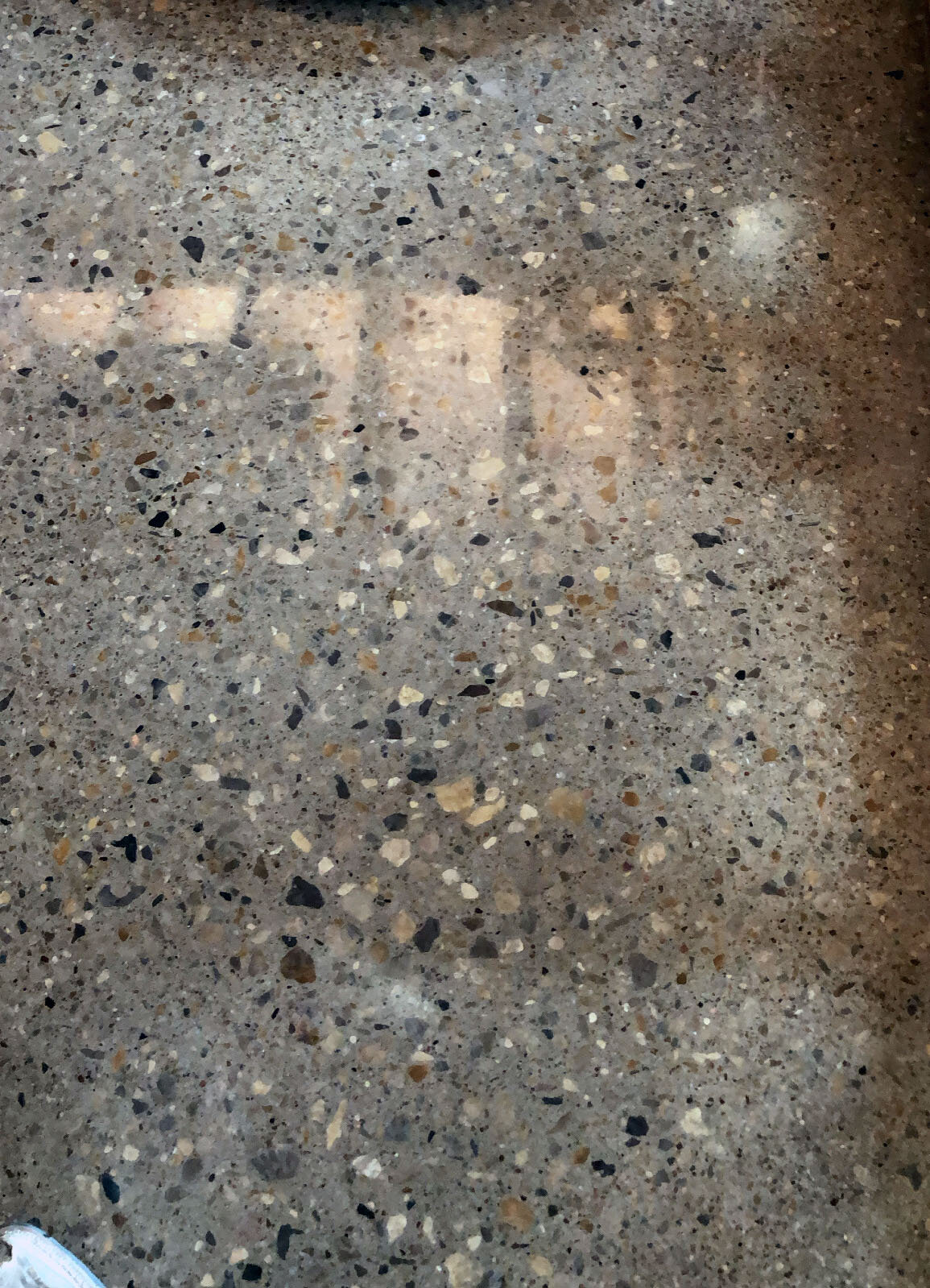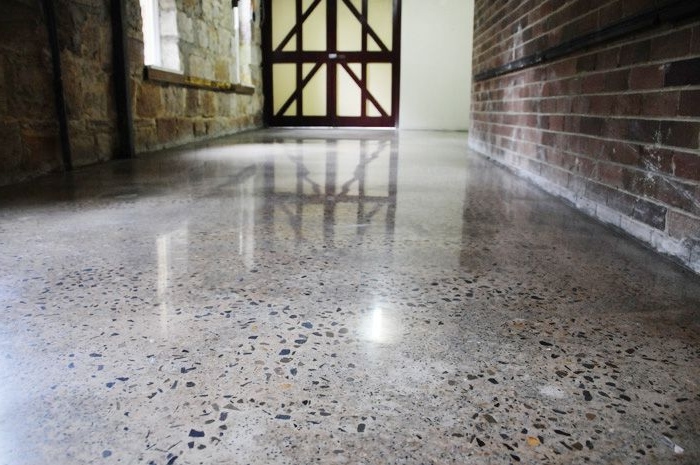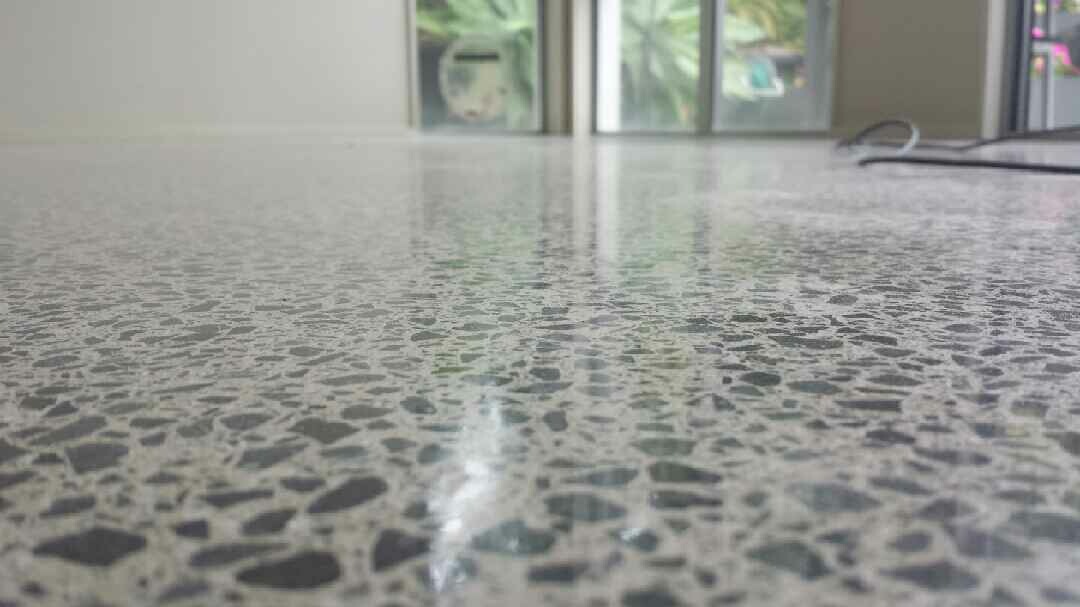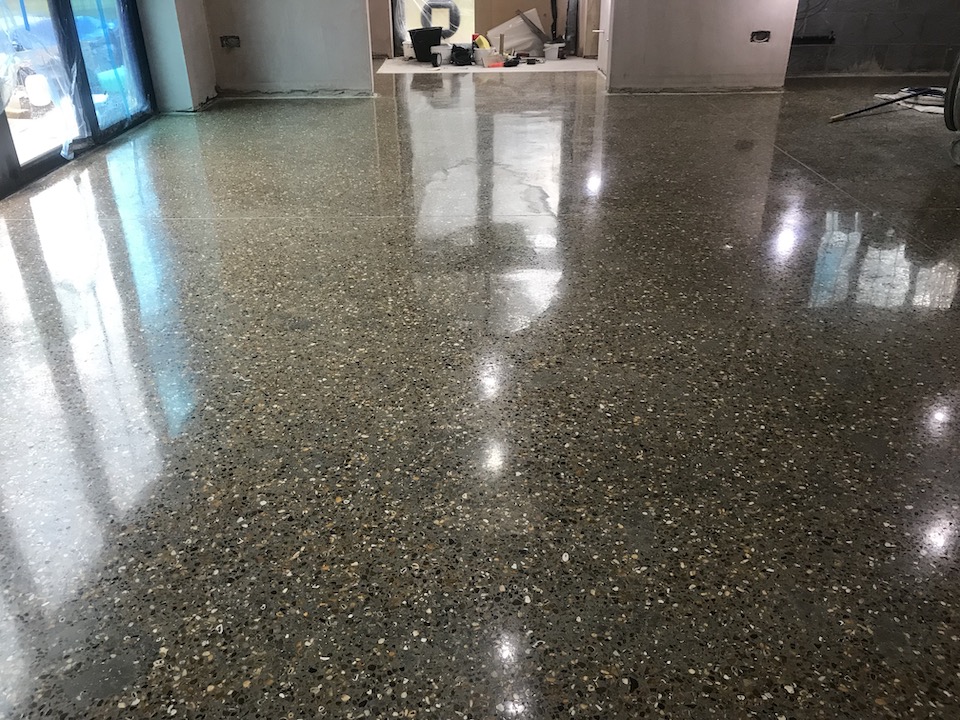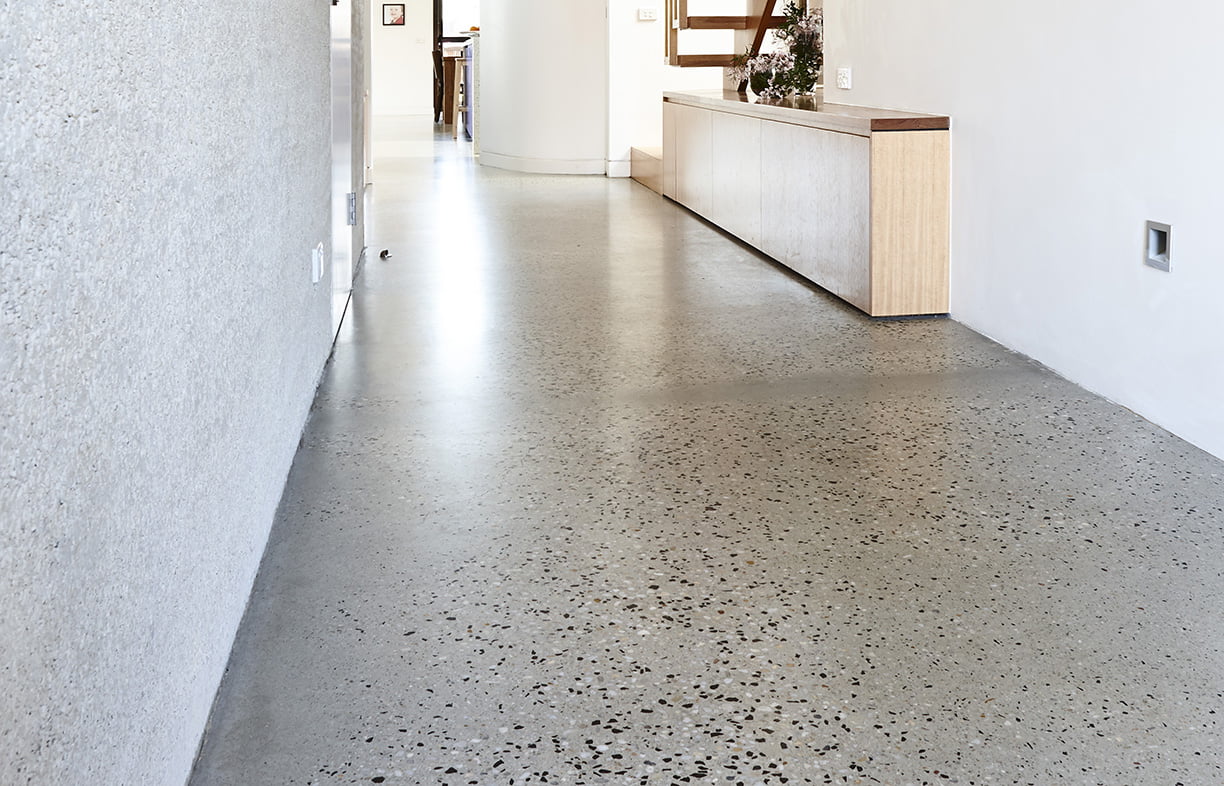Polished Concrete Floors with Exposed Aggregate
A polished concrete floor with exposed aggregate is a type of flooring that combines the durability and practicality of concrete with the aesthetic appeal of exposed aggregate. This type of flooring is achieved by first pouring and finishing a concrete slab, and then grinding and polishing the surface to create a smooth and glossy finish. During the polishing process, the top layer of the concrete is removed to expose the aggregate, which consists of small rocks, stones, and other decorative elements that are embedded in the concrete mix.
Exposed aggregate is a popular choice for polished concrete floors due to its unique and natural appearance. The exposed aggregate adds texture, color, and depth to the floor, creating a visually appealing and interesting surface. The type of aggregate used can vary depending on the desired look and design, with options ranging from colorful stones to recycled glass or seashells.
In addition to its aesthetic benefits, a polished concrete floor with exposed aggregate offers several practical advantages. The polished surface is highly durable and resistant to wear and tear, making it suitable for high-traffic areas such as commercial spaces and industrial facilities. It is also easy to maintain, as the smooth surface prevents dirt and stains from penetrating the floor, making it simple to clean and maintain its appearance.
Furthermore, polished concrete floors with exposed aggregate are an environmentally friendly choice. The use of concrete, a widely available and sustainable material, reduces the need for other flooring materials that may have a higher environmental impact. Additionally, the polishing process eliminates the need for coatings or sealants that may contain harmful chemicals, further reducing the environmental footprint.
A polished concrete floor with exposed aggregate is a versatile and aesthetically pleasing flooring option that combines the durability and practicality of concrete with the natural beauty of exposed aggregate. This type of flooring is not only visually appealing but also offers practical advantages such as durability, easy maintenance, and environmental sustainability.
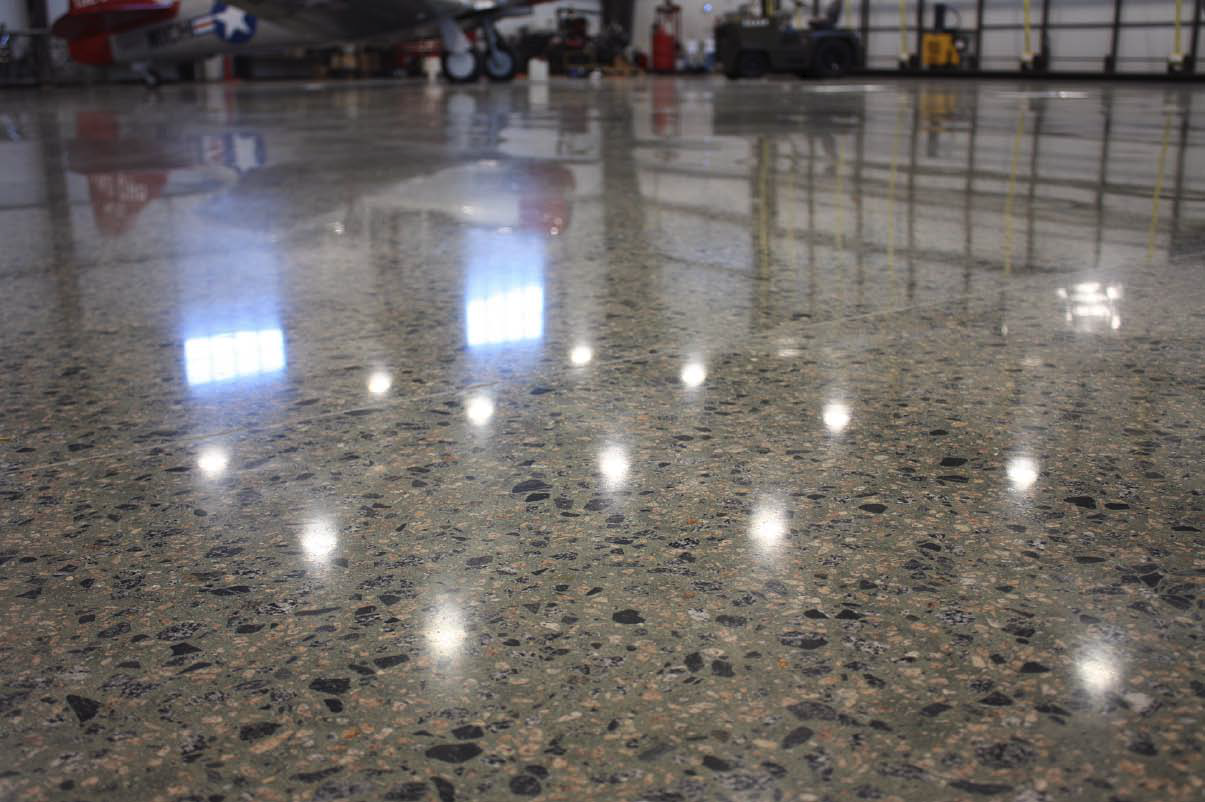
Benefits of Polished Concrete Floors with Exposed Aggregate
1. Enhanced Aesthetics: Polished concrete floors with exposed aggregate offer a unique and visually appealing flooring option. The exposed aggregate adds depth and texture to the floor, creating a natural and organic look. This can greatly enhance the overall aesthetics of any space, whether it’s a residential, commercial, or industrial setting.
2. Increased Durability: Polished concrete floors with exposed aggregate are highly durable and long-lasting. The process of polishing the concrete and exposing the aggregate helps to strengthen the surface, making it resistant to wear, tear, and impact. This makes it an ideal flooring choice for high-traffic areas such as retail stores, warehouses, and garages.
3. Low Maintenance: One of the major benefits of polished concrete floors with exposed aggregate is their low maintenance requirements. The smooth and polished surface makes it easy to clean and maintain, reducing the need for regular upkeep. Unlike other flooring options, such as carpets or hardwood, polished concrete floors do not require waxing, sealing, or extensive cleaning routines.
4. Improved Indoor Air Quality: Polished concrete floors with exposed aggregate are a great option for those concerned about indoor air quality. Unlike carpeted floors, which can trap dust, allergens, and pollutants, polished concrete floors do not harbor these particles. This can help to create a healthier indoor environment, particularly for individuals with allergies or respiratory conditions.
5. Cost-Effective: Polished concrete floors with exposed aggregate can be a cost-effective flooring solution in the long run. The initial installation costs may be higher compared to other flooring options, but the low maintenance requirements and long lifespan can offset these expenses. Additionally, the durability of polished concrete floors means that they are less likely to require frequent repairs or replacement, saving on future costs.
6. Sustainable Choice: Concrete is a sustainable building material, and polished concrete floors with exposed aggregate further enhance their eco-friendliness. The process of polishing and exposing the aggregate does not require the use of additional materials or chemicals, reducing the environmental impact. Additionally, the long lifespan of polished concrete floors means less waste generated over time compared to other flooring options.
How to Achieve a Polished Concrete Floor with Exposed Aggregate
Preparing the Surface for Polishing
Before starting the process of achieving a polished concrete floor with exposed aggregate, it is crucial to ensure that the surface is properly prepared. Begin by removing any existing coatings or sealers from the concrete through mechanical grinding or chemical stripping. This step is essential to expose the aggregate and provide a clean surface for polishing.
Honing the Concrete Surface
Once the surface is prepared, the next step is to hone the concrete. This involves using progressively finer grits of diamond abrasives to achieve a smooth and even surface. Start with a coarse grit and gradually work your way up to finer grits to remove any imperfections and achieve the desired level of smoothness.
Exposing the Aggregate
To achieve a polished concrete floor with exposed aggregate, it is necessary to expose the aggregate in the concrete. This can be done by grinding the surface with a coarse diamond abrasive, which removes the top layer of cement paste to reveal the aggregate beneath. The amount of aggregate exposed can be controlled by adjusting the grinding depth.
Polishing the Concrete
Once the aggregate is exposed, the next step is to polish the concrete to achieve the desired level of shine. This is typically done using a series of progressively finer diamond abrasives. Each successive pass with a finer grit will help to refine the surface and enhance its luster. It is important to follow the manufacturer’s recommendations for the specific polishing equipment and products being used.
Applying a Concrete Sealer
To protect the polished concrete floor and enhance its appearance, it is recommended to apply a concrete sealer. A high-quality sealer will help to prevent staining and make the floor easier to clean and maintain. Choose a sealer that is specifically designed for polished concrete floors and follow the manufacturer’s instructions for application.
Regular Maintenance
To keep a polished concrete floor with exposed aggregate looking its best, regular maintenance is essential. This includes routine cleaning with a pH-neutral cleaner and periodic reapplication of a concrete sealer. Avoid using harsh chemicals or abrasive cleaners that could damage the surface. Additionally, it is important to promptly clean up any spills to prevent staining.
Maintenance and Care Tips
1. Regular Cleaning
One of the most important maintenance tips for polished concrete floors with exposed aggregate is regular cleaning. Sweeping or vacuuming the floor on a daily or weekly basis can help remove dirt, dust, and debris that may accumulate on the surface. This prevents the particles from scratching or dulling the polished finish.
2. Avoid Harsh Chemicals
When cleaning polished concrete floors with exposed aggregate, it is essential to avoid using harsh chemicals such as bleach, ammonia, or acidic cleaners. These substances can damage the surface and cause discoloration or etching. Instead, opt for pH-neutral cleaners specifically formulated for polished concrete.
3. Promptly Clean Spills
Accidental spills should be promptly cleaned to prevent any staining or damage to the polished concrete floor. Use a soft cloth or mop to absorb the spill and gently clean the area with a mild cleaner. Avoid rubbing or scrubbing vigorously, as this can cause scratches.
4. Use Mats and Rugs
To protect the polished concrete floors with exposed aggregate from scratches and wear, place mats or rugs at entryways and high-traffic areas. These can help trap dirt and grit from shoes, reducing the amount of debris that gets onto the floor. Additionally, using felt pads on furniture legs can prevent them from scratching the surface when moved.
5. Avoid Sharp Objects
To maintain the integrity of the polished concrete floor, it is important to avoid dragging or sliding sharp objects across the surface. This includes furniture with metal or rough edges. Using protective pads or cushions underneath furniture legs can prevent scratches and gouges.
6. Regular Sealing
Depending on the type of exposed aggregate used in the polished concrete floor, periodic sealing may be necessary to protect it from stains and moisture. Consult with a professional to determine the appropriate sealing schedule and products to use.
7. Avoid Excessive Moisture
While polished concrete floors with exposed aggregate are generally resistant to moisture, it is still important to avoid excessive water or liquid exposure. Wipe up any spills immediately and ensure proper ventilation in areas prone to moisture, such as bathrooms or kitchens.
8. Professional Maintenance
Regular professional maintenance is recommended to keep polished concrete floors with exposed aggregate in optimal condition. Professionals can provide deep cleaning, resealing, and repair services if necessary. They can also assess the floor’s condition and recommend any additional maintenance or care tips specific to the flooring type.
The Difference Between Honed and Polished Concrete?
Large Exposed Aggregate – CT Concrete Polishing
Exposed Aggregate Concrete Polishing System
Perth Polished Concrete Concrete stained floors, Concrete floors
Concrete Grinding u0026 Polishing Exposed Aggregates
River Scene Incorporated into Buildingu0027s Polished Concrete Floor
Exposed Aggregate, Polished Garage by Paul Rogers Group – Runyon
12 Tips for a perfect polished concrete floor – CRESCO
When is a concrete floor the right choice? – Renew
Related Posts:
- Polished Concrete Floors For Patios
- White Concrete Floor Tiles
- Acid Wash Concrete Floor Colors
- Concrete Floor Thickness For A Garage
- Concrete Floor For Bathroom
- Interior Concrete Floor Ideas
- Kitchen Stained Concrete Floors
- Concrete Floor Tile Thickness
- How To Stain Concrete Floors DIY
- DIY Concrete Floor Grinding
